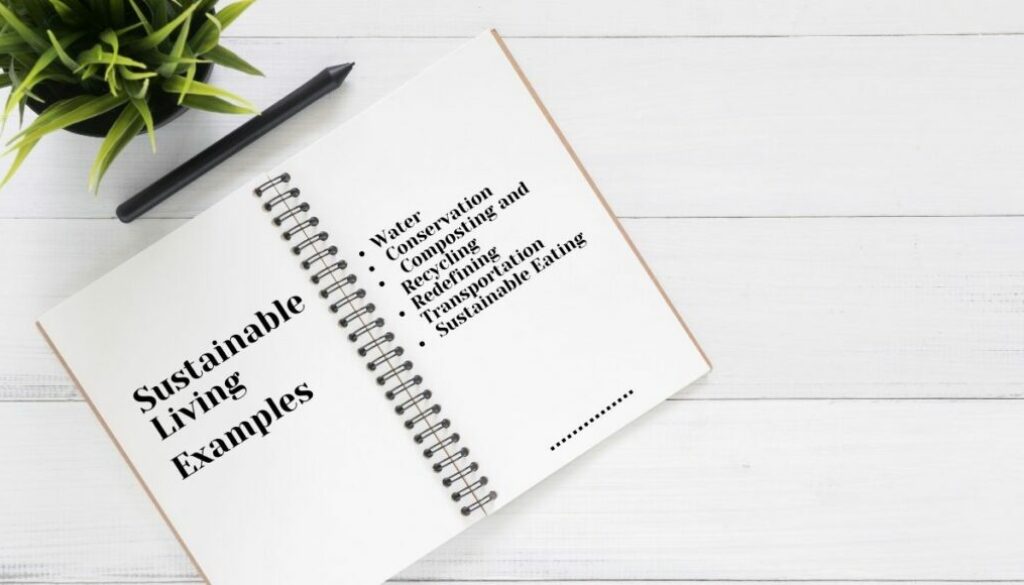8+ Sustainable Living Examples: Eco-Savvy
Explore diverse sustainable living examples for a greener lifestyle. From eco-friendly housing to mindful transportation choices.
Sustainable Living Examples
Sustainable living, a conscientious lifestyle choice, is becoming increasingly crucial in today’s world. Embracing sustainable living examples isn’t merely an environmental trend; it’s a necessity for a healthier planet.
A 2022 Gallup poll found that 70% of Americans believe that protecting the environment is important, with 37% saying it is “very important.” This represents a significant increase from 2019 when 59% of Americans said protecting the environment was important. The poll also found that millennials and Gen Z are more likely than older generations to prioritize environmental protection.
From housing and transportation to food consumption, integrating sustainable practices into our daily lives plays a pivotal role in minimizing our ecological footprint. By exploring various sustainable living examples, we find a multitude of ways to harmonize our lifestyles with the environment.
Housing

In the array of sustainable living examples, housing stands as a cornerstone. Embracing eco-friendly practices within our homes holds immense potential for positive environmental impact.
Opting for energy-efficient designs and integrating sustainable materials like recycled wood or bamboo not only reduces the carbon footprint but also promotes sustainable forestry practices. Moreover, introducing systems for rainwater harvesting and installing low-flow fixtures significantly contributes to water conservation efforts.
Embracing the trifecta of conserving water, composting organic waste, and diligent recycling not only minimizes waste but also fosters a more ecologically balanced lifestyle within the sphere of sustainable living.
Water Conservation

Within the realm of sustainable living examples, water conservation emerges as a pivotal aspect, intricately linked to mindful living. Implementing low-flow fixtures and embracing rainwater harvesting methods stand as cornerstone practices in this endeavor.
Low-flow fixtures, ranging from faucets to toilets, curtail water usage significantly, aligning with the ethos of sustainable living. Similarly, rainwater harvesting not only reduces demand for conventional water sources but also harnesses nature’s gift for various household purposes. Incorporating these water conservation methods into our daily routines embodies the essence of sustainable living, fostering a more environmentally conscious lifestyle while safeguarding our precious resources.
Composting and Recycling

In the tapestry of sustainable living examples, composting and recycling weaves a narrative of responsible resource management. Composting, the transformation of organic waste into nutrient-rich soil, is a fundamental practice fostering sustainable living.
Diverting organic matter from landfills, not only reduces methane emissions but also enriches soil health for greener landscapes. Simultaneously, recycling serves as a linchpin in the sustainability framework, giving a new life to materials that would otherwise clutter our ecosystems. Embracing these practices doesn’t just signify waste reduction; it’s a conscious commitment to nurturing the environment and actively contributing to the circular economy, embodying the essence of sustainable living.
Redefining Transportation

Navigating toward sustainable living examples, our choices in transportation wield immense influence on our environmental footprint. Opting for eco-conscious methods like public transport, cycling, carpooling, and embracing electric vehicles reshapes our journey towards a greener future. Public transportation not only reduces individual carbon emissions but also eases traffic congestion, contributing to cleaner urban environments.
Similarly, cycling and carpooling initiatives significantly cut down on fuel consumption while promoting healthier lifestyles and community bonds. Embracing electric vehicles marks a technological leap towards reduced carbon emissions and a reliance on renewable energy sources. Each choice in transportation becomes a pivotal step in embracing sustainable living, fostering a symbiotic relationship between our mobility needs and the preservation of our planet.
Sustainable Eating

Within the tapestry of sustainable living examples, our dietary choices wield considerable power in shaping the environmental landscape. Embracing sustainable eating habits stands as a beacon of change. Opting for local and seasonal produce not only supports regional agriculture but also reduces carbon emissions associated with long-distance transportation.
Similarly, reducing meat consumption, particularly from resource-intensive sources, minimizes our ecological footprint while promoting healthier diets. Embracing a mindset that champions minimizing food waste completes this sustainable eating circle, ensuring that what’s produced is consumed, reducing strain on landfills, and conserving resources. Each choice on our plate becomes a tangible step towards harmonizing our diets with the health of our planet.
Eat less meat

Furthermore, understanding the impact of our food choices enables us to forge a more sustainable future. When we actively seek out locally sourced ingredients, we not only support local economies but also reduce the carbon footprint associated with food transportation.
Cutting down on meat consumption, especially from industrially produced sources, contributes to curbing deforestation and mitigating greenhouse gas emissions. Additionally, minimizing food waste by careful planning and repurposing leftovers underscores our commitment to sustainability, creating a cycle of conscientious consumption that echoes the ethos of sustainable living.
Conscious Cart

Amidst the panorama of sustainable living examples, grocery shopping emerges as a pivotal arena for impactful change. Opting for sustainable grocery shopping practices holds the key to reducing our environmental footprint.
Choosing locally sourced, organic produce not only supports local farmers but also reduces the carbon emissions associated with long-haul transportation. Embracing bulk buying options and minimizing single-use packaging by carrying reusable bags and containers significantly curtails plastic waste.
Additionally, supporting brands and stores committed to sustainable practices and ethical sourcing amplifies the impact of our shopping choices. Each conscious purchase becomes a stride towards a more sustainable future, aligning our shopping habits with the broader ethos of sustainable living.
Plastic-Free Practices

In the spectrum of sustainable living examples, bidding farewell to plastics emerges as a crucial step in nurturing our planet. Ditching single-use plastics marks a transformative shift towards a more eco-conscious lifestyle. Opting for reusable alternatives such as cloth grocery bags and stainless steel containers significantly reduces plastic waste. Embracing sustainable packaging options and actively supporting businesses that champion plastic-free initiatives further fortifies this stance. Each step away from plastics paves the way for a cleaner environment, fostering a sustainable living ethos that prioritizes the health of our planet and future generations.
Mindful Clothes Washing

Amid the array of sustainable living examples, the way we launder our clothes holds untapped potential for eco-consciousness. Carefully planning clothes washing routines stands as a simple yet impactful practice in sustainable living. Opting for full loads, using cold water settings, and choosing eco-friendly detergents minimize water and energy consumption. Furthermore, exploring air-drying methods or opting for energy-efficient dryers reduces our reliance on electricity and fosters a greener approach to laundry. These mindful practices not only preserve resources but also prolong the life of garments, contributing to reduced textile waste. Embracing these small changes in our laundry habits embodies the essence of sustainable living, offering a path towards a more environmentally sensitive lifestyle.
Overview
From conscientious choices in housing that embrace eco-friendly materials to mindful transportation decisions and sustainable eating habits, every step towards sustainability carries profound implications for our planet’s health. By integrating these practices into our daily lives, we not only reduce our ecological footprint but also pave the way for a more balanced and resilient future for generations to come. Embracing sustainable living isn’t just an aspiration; it’s an actionable roadmap towards a healthier planet for all.
Ready to Make a Change?
Start Your Sustainable Journey Today!



